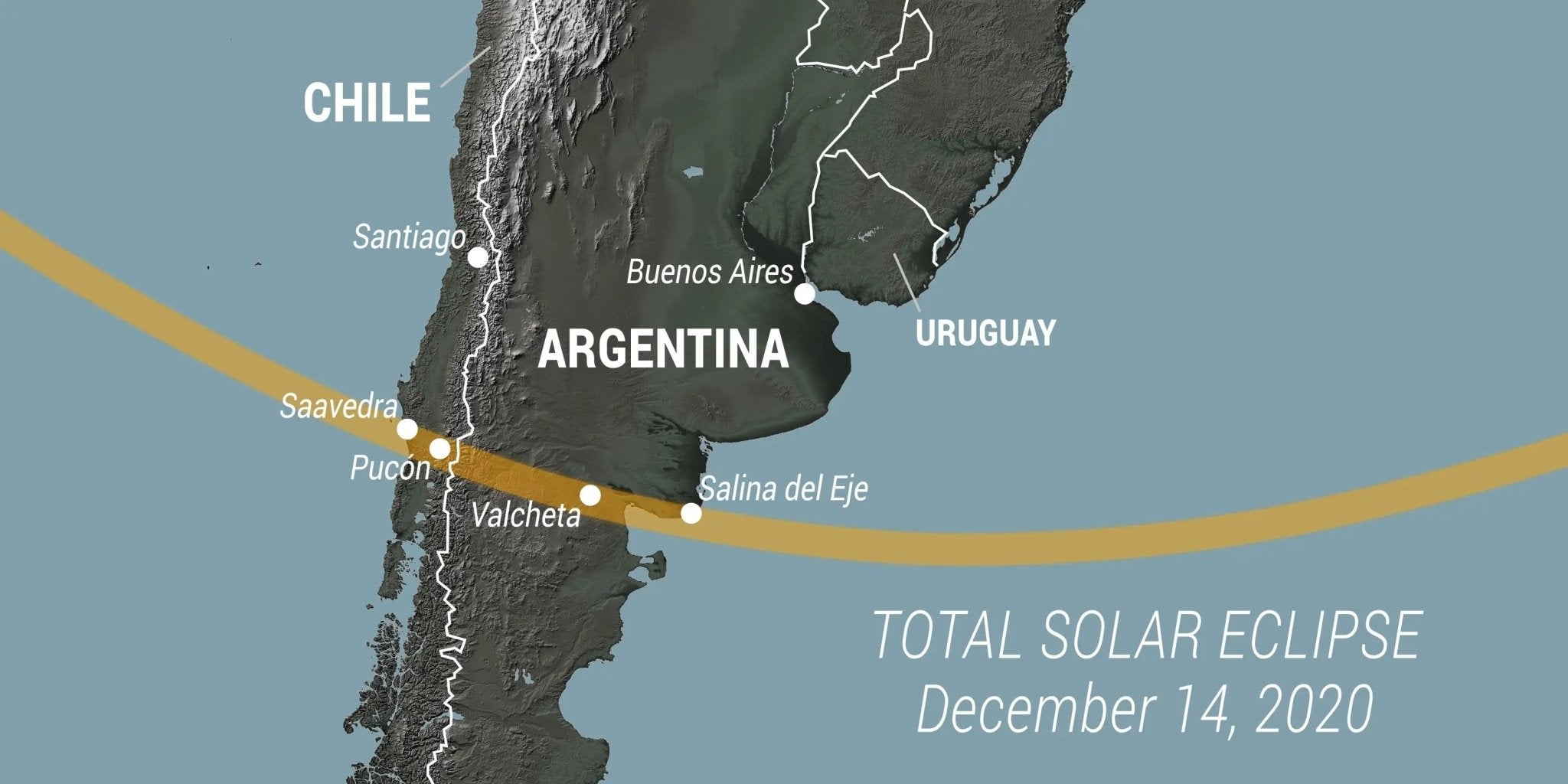Introduction
On December 14, 2020, South America witnessed a celestial event that captured the imagination of millions: a total solar eclipse. This awe-inspiring phenomenon occurred when the Moon passed between the Earth and the Sun, casting a shadow that completely obscured the Sun for a brief period. The event was visible across parts of Chile and Argentina, offering a unique and mesmerizing experience for skywatchers and scientists alike.
The Path of Totality
The path of totality, where the Sun was completely covered by the Moon, stretched across a narrow corridor in South America. It began in the Pacific Ocean, crossed over the Chilean region of La Araucanía, and continued into Argentina, passing through the provinces of Neuquén and Río Negro. Observers within this path experienced complete darkness for up to 2 minutes and 10 seconds, a surreal moment when day turned into night.
Scientific Importance
Solar eclipses offer a rare opportunity for scientists to study the Sun's outer atmosphere, known as the corona. The corona is usually obscured by the Sun's brightness, but during a total eclipse, it becomes visible as a halo of plasma surrounding the dark disk of the Moon. Researchers used specialized equipment to capture data on solar flares, magnetic fields, and other solar activities, contributing to our understanding of the Sun and its impact on Earth's climate and electromagnetic field.
Public Engagement and Cultural Significance
The 2020 South American eclipse was a major event for tourism, especially in regions within the path of totality. Special viewing events, festivals, and educational programs were organized to engage the public. The eclipse also held cultural significance for indigenous communities, who have their own traditional interpretations of this celestial event.
Safety Measures
Given the potential harm that looking directly at the Sun can cause, safety was a significant concern. Authorities and organizations distributed solar viewing glasses and provided guidelines on how to safely observe the eclipse. Telescopes with solar filters and pinhole projectors were also popular methods for safe viewing.
Legacy and Future Eclipses
The 2020 eclipse left an indelible impression on those who experienced it, serving as a reminder of the wonders of the universe. It also served as a precursor to future eclipses, including another total solar eclipse expected to occur in Antarctica on December 4, 2021, and a partial solar eclipse visible in parts of South America on October 14, 2023.
Conclusion
The 2020 South American eclipse was a spectacle that offered both scientific insights and public engagement. It was a moment that united people under the sky, evoking a sense of wonder and curiosity. As we look forward to future celestial events, the memories and data gathered from this eclipse will continue to inspire and inform us for years to come.
---
*Note: The information in this article is based on data available up to September 2021.*



Share:
How to Find the Perfect Spot to View the October 2023 Eclipse
The August 2017 Solar Eclipse: A Celestial Event That United and Inspired